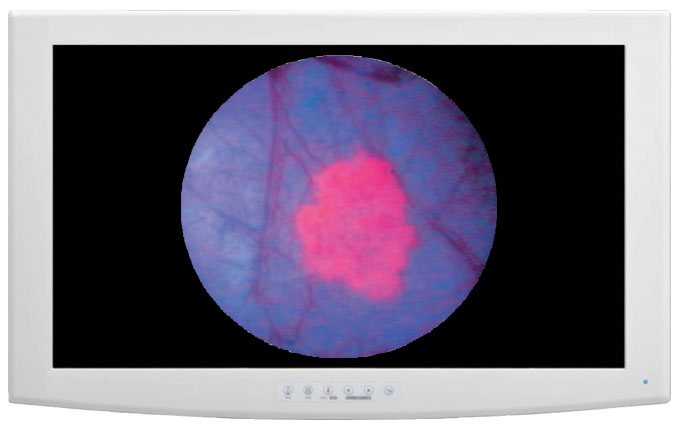
You may remember this from an article I wrote two weeks ago. In it, I talked about a Pentagon-funded robotic jellyfish that uses hydrogen as its power source. It's a developmental robofish capable of helping in underwater rescues (or spy missions).
Turns out that wasn't the only big advance inspired by this primitive sea creature. . .
Just this week, we learned that a crack research team has created something incredible called Medusoid.
That's their nickname for an artificial jellyfish they made from rat heart cells and a silicone polymer. This bioengineered creature swims by squeezing its muscles, the same way a real jellyfish does.
More to the point, Medusoid could become a great model for testing new drugs. It also could lead the way to advances in artificial hearts and other human organs.
As I see it, these two breakthroughs coming so close together proves that the Era of Radical Change is here. Cutting-edge high tech really is moving at warp speed, with new advances coming faster than any one person can track.
Indeed, there was plenty of fodder for my fascinations of the month.
Take a look as these new technology trends. . .
Spray-On Batteries and Medical Treatments
In the near future, just about any old object could become a battery. . .
Researchers at Rice University recently took apart a battery's components and turned them into liquids. The team then sprayed the surface of bathroom tiles with the material needed to make a lithium-ion battery, used in all sort of electronics. They topped the central tile with a solar cell that turned light from the lab into energy. Once fully charged, the system ran a series LED lights for six hours.
The results bode well for storing energy needed to power all sorts of gadgets.
Not only that, but spray-on tech could help treat disease, too.
A team from Northwestern University recently created a lotion that can change a patient's DNA.
Here's their secret. They used tiny groups of ribonucleic acids. Known as RNA, these acids transfer the body's genetic code and can penetrate skin. Once inside cells, the RNA turned off genes that cause disease.
Tests so far on mice and human skin found no side effects, the team said.
High-Tech Gloves that Improve Mobility and Translate Speech
Traditional gloves protect our hands and keep them warm.
Modern gloves do so much more. . .like help disabled people join the mainstream.
Take the new wireless "musical" glove that can improve the sense of touch and motor skills for patients with spinal cord injuries. Georgia Tech researchers reported great results in a test of the Mobile Music Touch system. The gloves look like those for exercise, but had a small box on the back.
When users played the piano, the box vibrated to tell them which keys to press. The project required test subjects to practice 30 minutes a day, three times a week. They also wore the gloves at home for two hours each day.
After two months, those who had used the gloves showed better results in tests for grasping and sensation skills. Researchers believe the system renewed brain activity that goes dormant after a severe injury to the spinal cord.
Meanwhile, a team in the Ukraine has made a pair of gloves that can translate sign language for the deaf into speech. Their EnableTalk wireless system connects Bluetooth to a smart phone. It relies on a text-to-speech system and a library of gestures they can tweak to account for dialects and the like.
The new tech could have a wide impact. Roughly 40 million people around the world are deaf, mute, or both. Many use sign language to communicate. But most non-deaf people don't know sign language.
Best of all—they made a prototype for only $75.
Smartphone Apps that Can Find Bombs and Ear Infections
Dealing with bombs and explosives and crowd response requires years of special training. But not every first responder at an emergency is a member of a bomb squad.
Not to worry. . .the U.S. Dept. of Homeland Security now has an app for that.
Called The FiRST app, it combines Google Inc. (NASDAQ:GOOG) maps, search, email, phone, and road and weather data. Among other things, the system tells those first on the scene where to place roadblocks and which buildings to evacuate.
The app works on Google Android devices and iPhones. And it costs just $12.
Of course, smartphone apps are already taking the world by storm. In fact, the iPhone from Apple Inc. (NASDAQ:AAPL) has given rise to the mobile health (Mhealth) sector, a market that will grow to $23 billion in five years.
I wrote about this field earlier last month. You can click here to read the story.
Turns out mobile-health startup CellScope has created a device that turns a smartphone into an otoscope—the device a doctor uses to check a patient's ear for infections.
CellScope attaches to a phone, giving users a view magnified 10 times inside the ear. It's designed to let users or their parents take photos or video inside the ear to send to the doctor to check for infection.
This could help cut the costs of health care. After all, concerns about ear infections remain a leading reason why parents take their kids to the doctor.
Mhealth is moving so fast, even young scientists are reporting breakthroughs.
A team of students from John Hopkins was just awarded a $250,000 study grant for a project focused on HemoGlobe. It's a $20 device that converts a cell phone into a detector for anemia, a blood disorder.
Anemic mothers face many complications before and during birth, including death from blood loss associated with the delivery. In addition, a baby that survives a birth from an anemic mother may face serious health problems.
This app could save a lot of lives. It will allow health workers around globe will quickly and safely detect this high-risk condition in pregnant women and newborns.
I hope you enjoyed July's Fascinations of the Month. Don't forget to share what's fascinating you this month by leaving a comment below or writing to me at [email protected].
Michael Robinson
Money Morning



























































